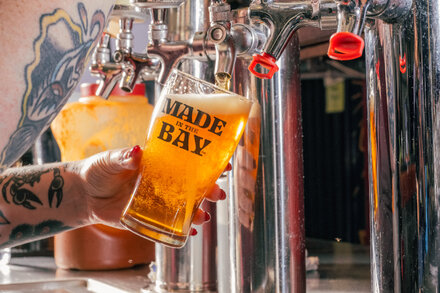After years of rapid expansion, the craft brewing industry is reportedly struggling as sales decline and consumer preferences shift. Many establishments are now re-evaluating their business models, with some facing closure.

The once-booming craft brewing industry is reportedly grappling with significant challenges, as shifting consumer preferences and a general slowdown in sales are forcing many establishments to re-evaluate their business models, with some facing closure. What was once a vibrant landscape of rapid expansion and diverse offerings is now experiencing a period of contraction and intense competition.
Industry reports indicate a notable decline in overall craft beer sales volume, a trend attributed to several factors. Market saturation, which saw thousands of breweries open nationwide over the last two decades, is now colliding with changing consumer habits. Economic pressures, including rising costs for ingredients, packaging, and labor, are also squeezing profit margins for many independent brewers.
Shifting Consumer Appetites
A primary driver of the current struggles appears to be a broader recalibration of consumer drinking habits. Younger demographics are reportedly consuming less alcohol overall, and when they do, there’s a growing inclination towards alternative beverages such as seltzers, spirits, ready-to-drink cocktails, and an expanding variety of non-alcoholic options. The novelty that once fueled the craft beer boom is reportedly waning for some.
“We’ve seen a definite shift away from the heavy IPAs and stouts that built our brand,” said Sarah Jenkins, owner of ‘The Copper Kettle Brewing Co.’ in Portland, Oregon. “People are looking for lighter options, or even just skipping beer altogether for a different kind of drink. It’s a tough pivot after years of focusing on a specific craft niche.”
Furthermore, an increased focus on health and wellness among consumers has led many to reduce their alcohol intake or seek out beverages with lower calorie counts and alcohol percentages. This trend presents a direct challenge to a segment of the industry often characterized by its high-ABV and flavor-intensive offerings.
Economic Headwinds and Market Saturation
The economic environment is also playing a critical role. Inflationary pressures have driven up the cost of raw materials like malt and hops, as well as aluminum cans and glass bottles. These increased operational costs, coupled with a fiercely competitive market, make it difficult for breweries to maintain profitability without significantly raising prices, which can further deter price-sensitive consumers.
“The market is simply oversupplied,” commented Mark Harrison, a beverage industry analyst. “For years, every town seemed to get its own craft brewery, and while that fostered incredible innovation, it also created an unsustainable level of competition. Now, with consumer demand flattening or even shrinking, only the most agile and well-capitalized operations will likely survive this shakeout.”
Several small and medium-sized breweries have reportedly closed their doors in recent months, with others consolidating or scaling back production. Those that remain are exploring strategies such as diversifying their product lines to include seltzers or non-alcoholic beers, focusing on taproom experiences, or seeking wider distribution channels to maintain market share.
The current climate suggests a challenging period ahead for the craft brewing industry, which may see a significant restructuring as breweries adapt to evolving tastes and a more competitive economic landscape.
Source: Read the original article here.




